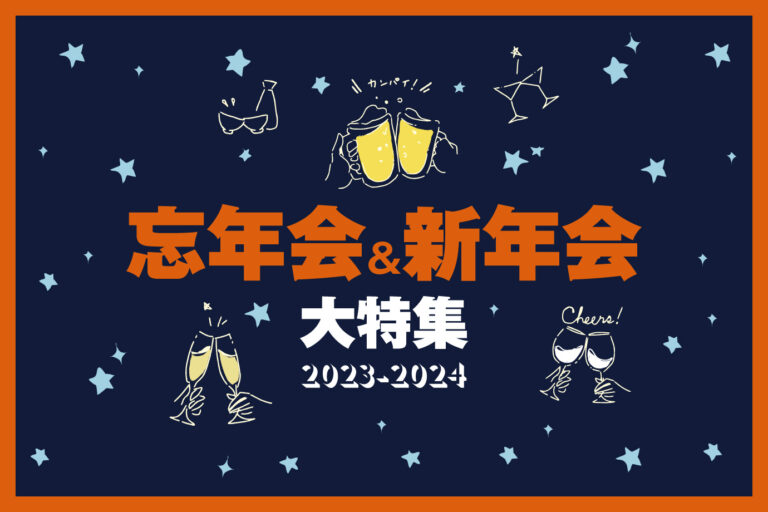
[2023]Cheers to Kyoto! Year-End & New Year's Party Special 20...
PR
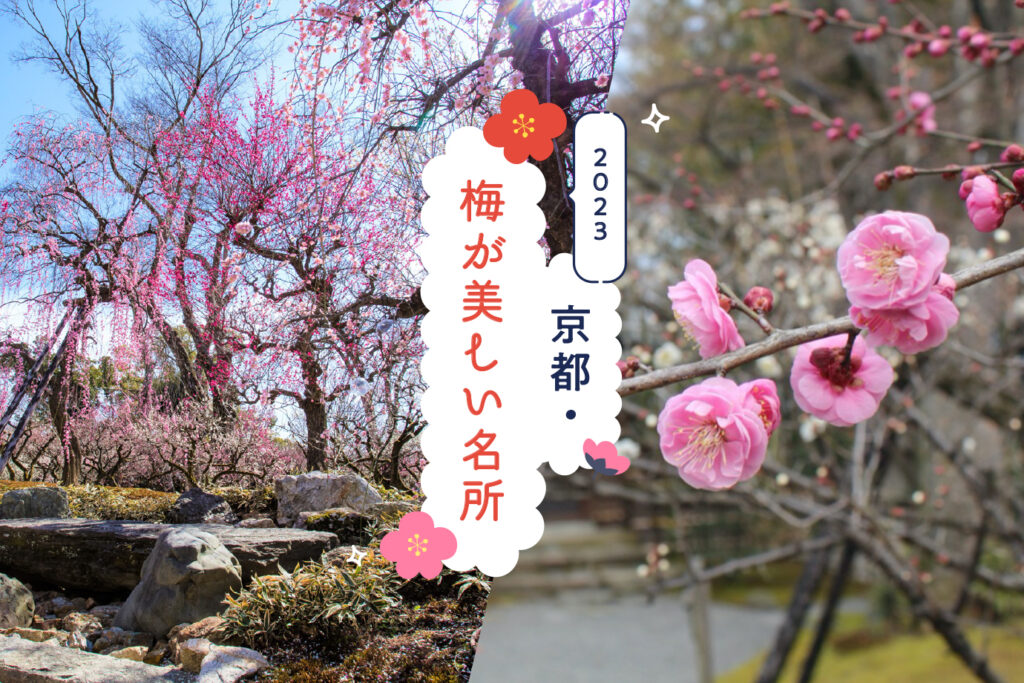

Although the severe cold weather continues, from early February to mid-March, Kyoto offers beautiful plum blossoms that add color to early spring. In this issue, we will introduce some of the best plum blossom viewing spots recommended by our local editorial office.
Kitano Tenmangu Shrine is known as one of the best plum blossom viewing spots in Kyoto. About 1,500 plum trees of 50 varieties, all related to Sugawara Michizane, the god of the shrine, are blooming in red and white all over the shrine grounds. The ume garden is one of the "Three Gardens of Snow, Moon, and Flowers," said to have been created by Sadanori Matsunaga, a poet of the Edo period, and was rebuilt as the "Flower Garden" of Kitano Tenmangu Shrine after an interval of about 150 years. During the nighttime illumination, about 700 candles light up the plum blossoms, creating a fantastic scene different from that of the daytime.
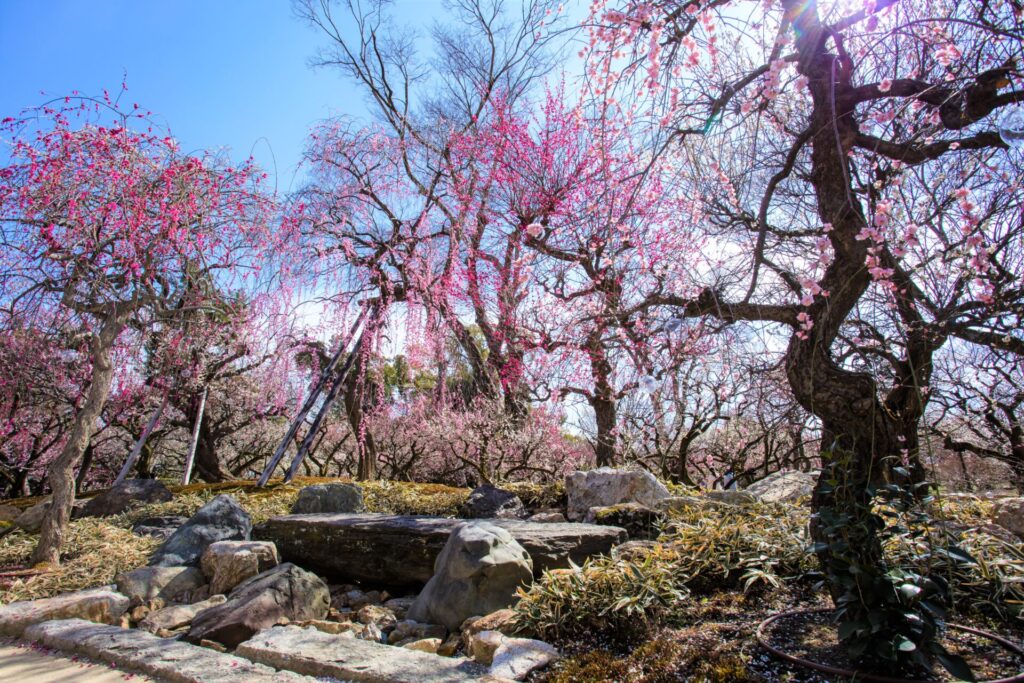

Umeen "Flower Garden
Best time to visit: Mid-February to mid-March
Open: Saturday, January 28, 2023 - Late March, 2023 9:00 - 16:00 (last admission at 15:40)
Light up / February 24 (Fri.) to March 19 (Sun.), sunset to 20:00 (last admission at 19:40)
Admission (with tea cakes): Adults (junior high school students and older): 1,200 yen, Elementary school students: 600 yen
Scheduled Events / Plum Blossom Festival Nodate Grand Tea Ceremony February 25 (Fri.) 10:00-14:00
Nodate ticket and first fee are required.
*Opening period depends on blooming conditions.
*Content may be changed for the Ume Garden and Umehana Festival depending on social conditions.
Daikakuji Temple, also known as Saga Gosho, is the head temple of the Daikakuji School of Shingon Buddhism.
The plum grove on the north side of Osawa-no-ike, the oldest existing garden pond in Japan, is planted with about 150 plum trees, creating a simple landscape that blends in with the nature of Sagano. The "Ukon-no-Tachibana" and "Sakon-no-Ume" in front of the Shinkinden (Imperial Household Hall) are in the style of the time when they were imported from China (Tang Dynasty), and when the "Sakon-no-Ume" is in bloom, the hall is even more beautiful.
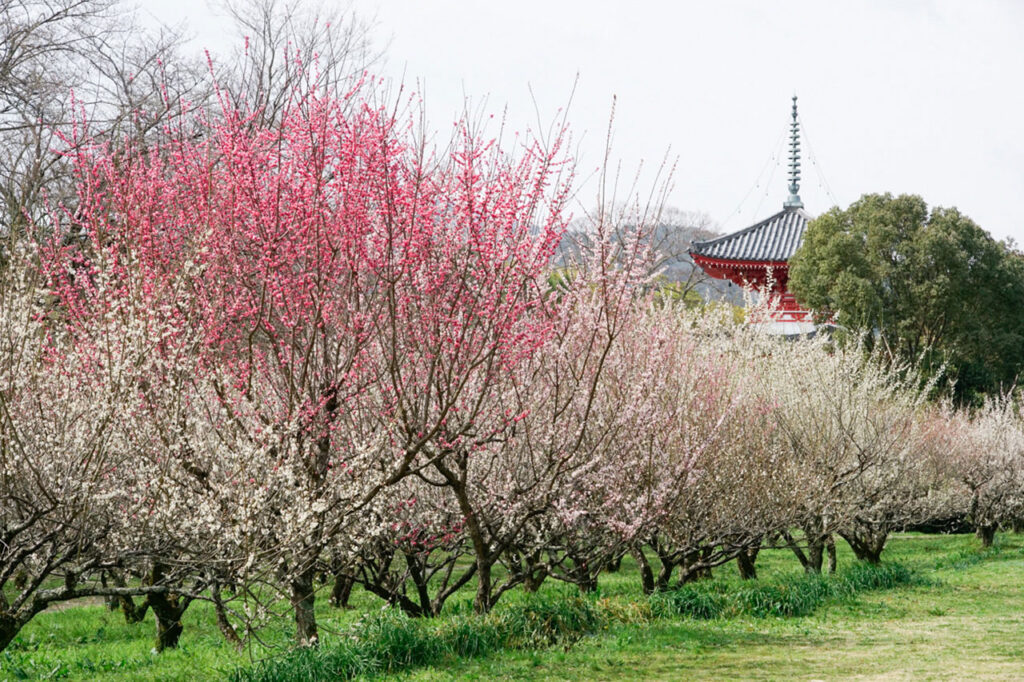

Best time to visit: Late February - early March
Admission Hours: 9:00-17:00 (last admission at 16:30)
Admission fee/
Odo area: Adults 500 yen, elementary, junior high and high school students 300 yen
Oosawaike area: Adults 300 yen, elementary, junior high and high school students 100 yen
Shokado Garden is known for its beautiful garden associated with Shojo Shokado, a shrine priest of Ishimizu Hachimangu Shrine in the early Edo period. In the outer garden of the circular garden, there are three teahouses, of which red and white plum trees are planted around Matsukakure and Umekakure. The combination of plum blossoms and the suikinkutsu (water kettle) in the tea house creates an atmospheric and beautiful scene.
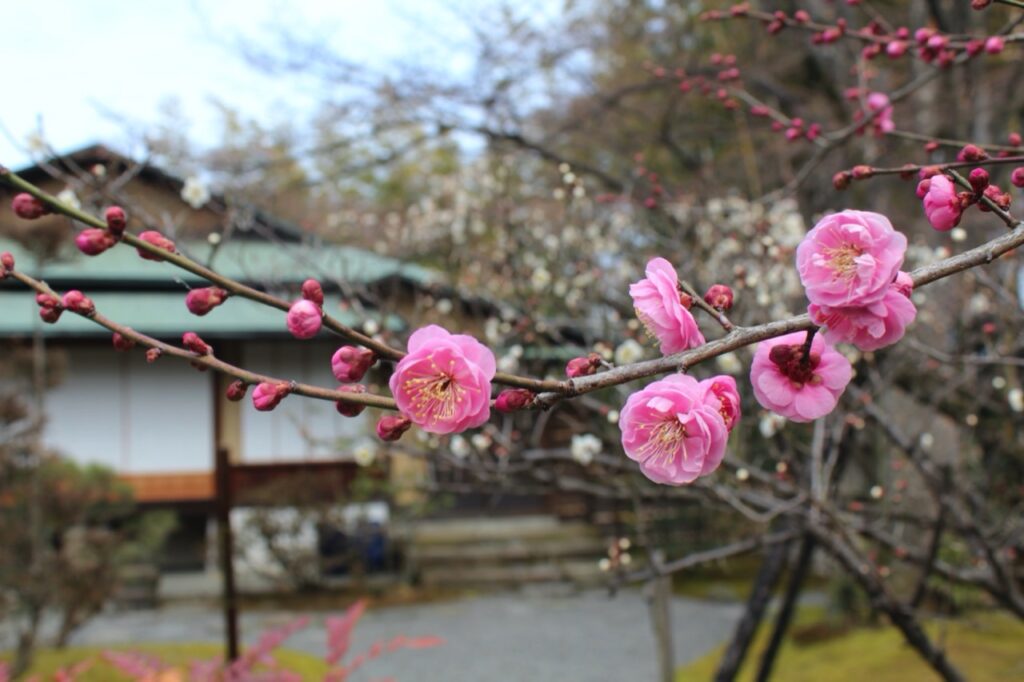
Image courtesy of Yawata City Shokado Garden and Art Museum

Best time to visit: Early to late Feb.
Admission Hours/9:00-17:00 (last admission/16:30)
Admission: 300 yen for adults, 220 yen for high school and university students, 150 yen for elementary and junior high school students
Event Schedule/
Shokado Art Museum
New Year's Exhibit: Auspicious Good Luck Items - Spring Works for the Year of the Rabbit
Dates: Saturday, January 14, 2023 - Sunday, February 19, 2023
Small exhibition in early spring Dyeing pattern paper design
Period: February 25, 2023 (Sat) - March 19, 2023 (Sun)
Shokado Garden
Camellia Week
Dates: March 4 (Sat.) - 12 (Sun.), 2023
The historic shrine [Otoyo Shrine] was built in the Heian period (794-1192). It is famous for its 250-year-old weeping plum tree. The weeping plum and weeping cherry trees are nestled together facing the main shrine, and bloom at the same time every few years. The shrine is also known for its camellias, and from March to April, over 100 camellia trees bloom throughout the shrine grounds.
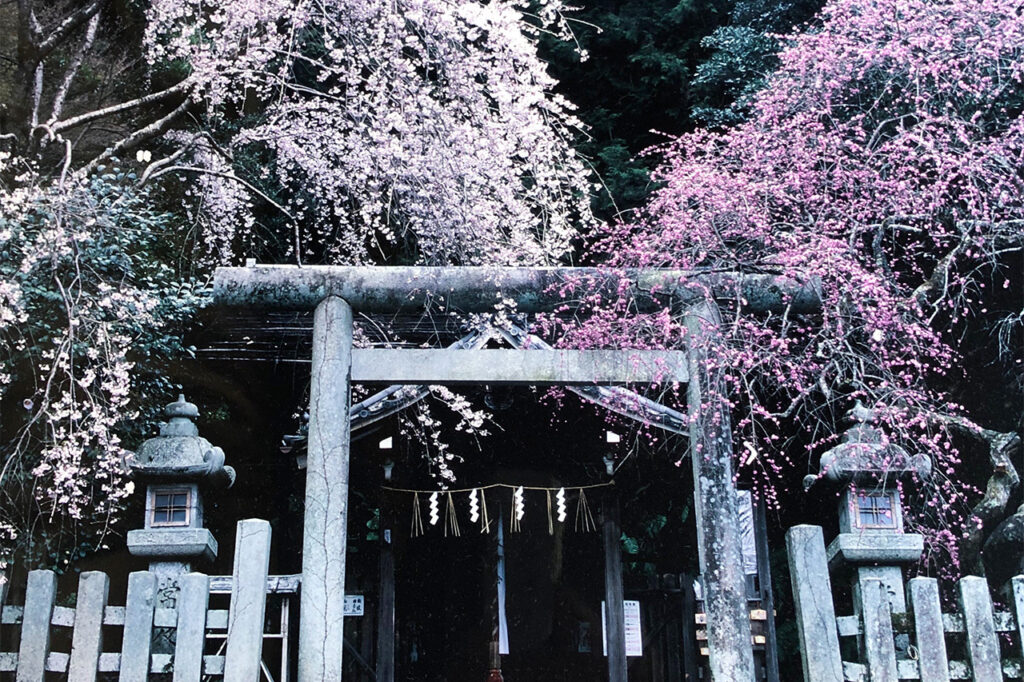

Best time to see: late March to early April
Hours of Operation / Admission Fee / Free
The Aoya Plum Grove, the largest plum grove in Kyoto Prefecture, has been in existence since the end of the Kamakura period. 10,000 plum trees bloom over an area of about 20 hectares from late February to early March, filling the entire Aoya area with a sweet fragrance.
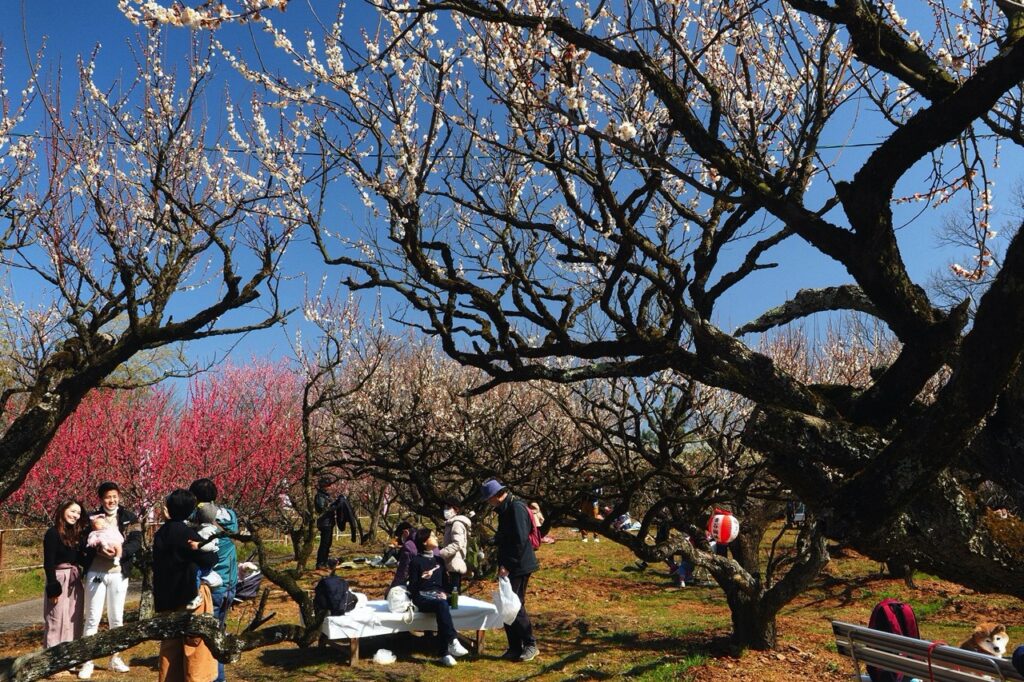

Best time to visit: Late February - early March
Event Schedule / Plum Blossom Festival February 25, 2023 (Sat) - March 12, 2023 (Sun) 10:00 - 15:00
*Subject to change depending on social conditions.
Mimuroto-ji Temple, known as one of the most famous flower temples in Kyoto, started to open its weeping ume (Japanese apricot) garden to the public this year. On a hill overlooking the urban area of Uji, approximately 250 trees, including 5-meter-tall Fuji-button and Kureha weeping plum trees, have been planted. Visit this new ume viewing spot where you can enjoy red and white weeping ume along with the scenery of Uji.
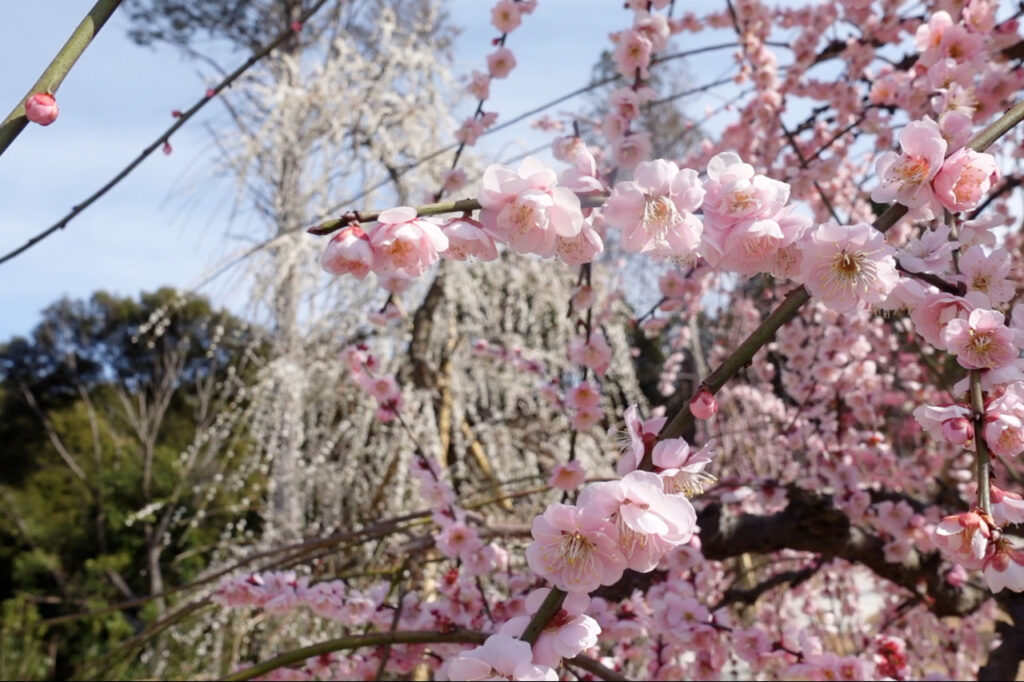

weeping plum garden
Best time to visit: Early to mid March
Opening Period / February 18, 2023 (Saturday) - March 31, 2023 (Friday) 8:30 - 15:10
Entrance fee: Adults 1,000 yen, children 500 yen *Ume candy included
*Not wheelchair accessible due to steep slopes and stairs.
Shimogamo-jinja Shrine is a power spot with the longest history in Kyoto. At the foot of the vermilion bridge over the Mitarashi River that runs through the shrine grounds, beautiful and vivid plum blossoms called "Korin-no-Ume" (plum blossoms of Korin) bloom. It is said that the plum blossoms depicted in the National Treasure "Red and White Plum Blossoms" by Ogata Korin, a painter of the Edo period, were modeled after Korin's plum blossoms.
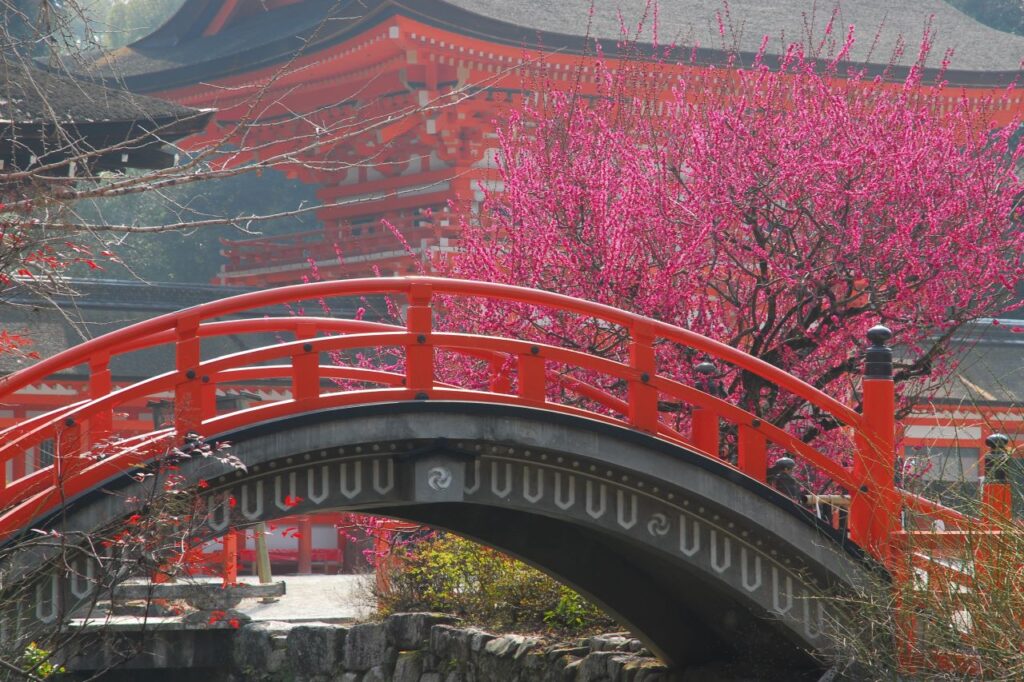

Best time to visit: Early February to early March
Visiting hours/6:30-17:00
Entrance fee/free in the precincts
Umemiya-taisha Shrine is famous as a god of fertility and safe childbirth, and it is said that if you step over the "Matoge-ishi" stone, you will be blessed with a child. The precincts of the shrine are planted with 400 ume trees of 35 varieties, and the "As you wish" (red and white blooming on a single tree) and the "Kinde Ume" (golden branches) are a must-see. You may also see a cute combination with the cats kept in the precincts of the shrine.
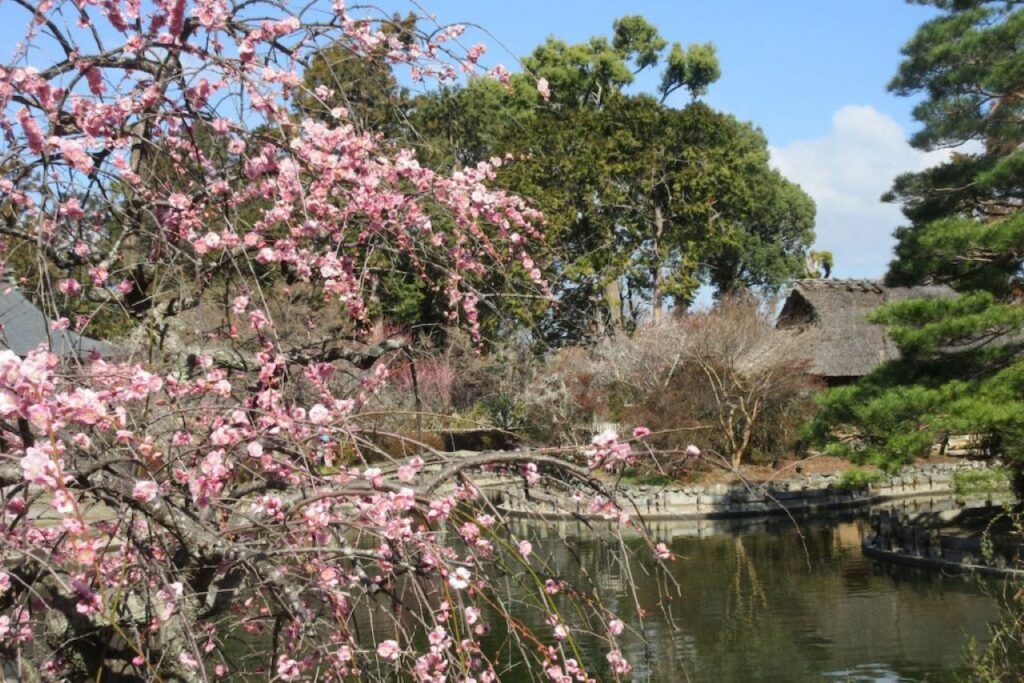

Best time to visit: Mid-February to mid-March
Hours of visitation: 6:30-18:00, Shrine Garden 9:00-17:00 (reception ends at 16:30)
Entrance fee/free in the precincts, 600 yen in the shrine garden
Scheduled Events / Ume-Ume Festival March 6 (Sun.) Rituals from 9:00 a.m., 9:30 a.m. to 4:00 p.m.
Jonangu Shrine was built on the occasion of the relocation of the capital to Heian-kyo to pray for the safety of the capital and the protection of the country, and is widely worshipped as a shrine for "Houyoyaku" (protection from the elements). Of the five gardens in the shrine garden, the 150 weeping plum trees in the "Spring Mountain" area are a sight to behold. The collaboration of 400 camellias of 150 varieties is also popular, especially when the weeping plum trees and the camellias on the green moss are framed together.
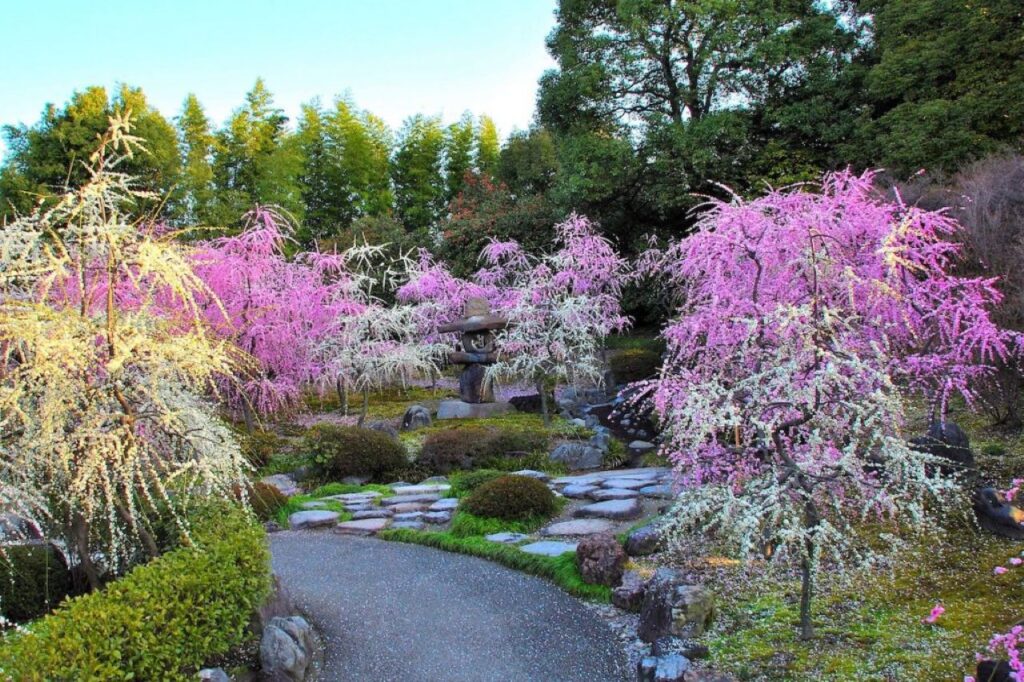

Weeping Plum and Camellia Festival
Best time to visit: Late February - early March
Event period: February 18 (Sat.) - March 22 (Wed.), 2023
Shinen garden hours: 9:00-16:30 (Last entry: 16:00)
Entrance fee for Shin-en Garden: Adults (junior high school students and above) 800 yen, Elementary school students 500 yen
* 400 yen for those who present a disability certificate and one attendant
Nagaoka Tenmangu Shrine is known for its Kirishima azalea trees, which are dedicated to Sugawara no Michizane. There are approximately 300 ume trees, including those planted in the adjacent ume grove and on the grounds of the shrine. When the entrance exam season comes around, visitors are greeted by plum blossoms with plump buds. The plum blossoms are beautiful as if remembering the memory of Michizane, and the competition between the plum blossoms and the ume crest is also deeply moving.
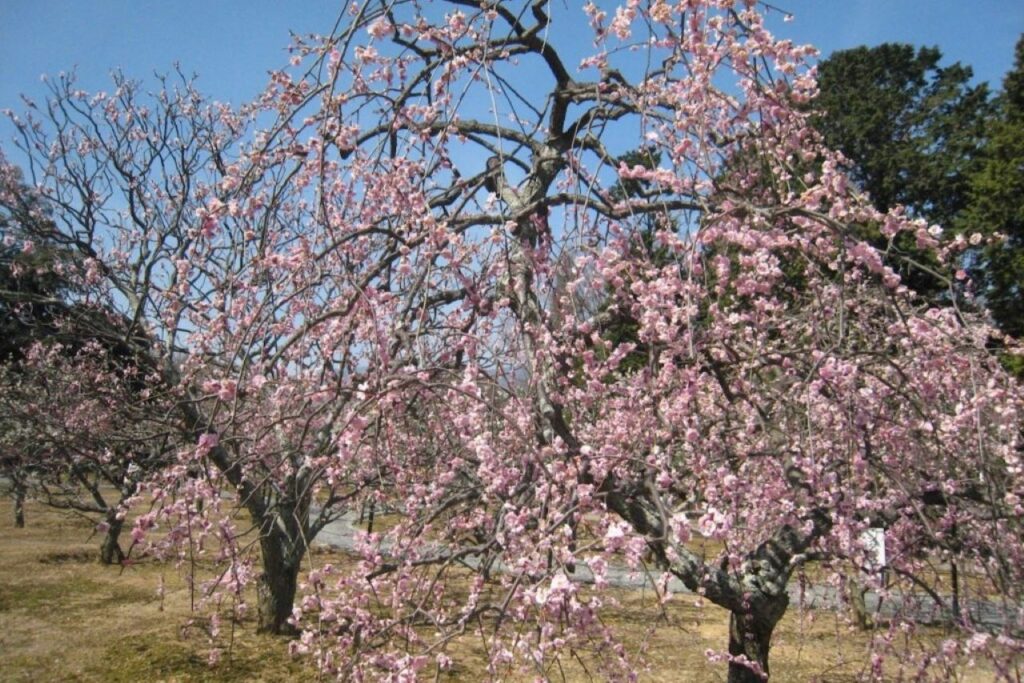

Best time to visit: Late February to mid-March
Hours of visitation: Free in the precincts (reception hours at the shrine office: 9:00-17:00)
Entrance fee/free in the precincts
Scheduled Events / Plum Blossom Festival March 12 (Sun) Tea Ceremony (fee required) 9:00-15:00
May be cancelled to prevent the spread of coronavirus
Zuishin-in Temple is associated with Ono no Komachi. On the last Sunday of March, a "Hanezu Odori" dance is held, in which girls in kosode (a traditional name for the color of red with a hint of white) dance with red plum blossoms in flower hats, based on the legend of Ono no Komachi.
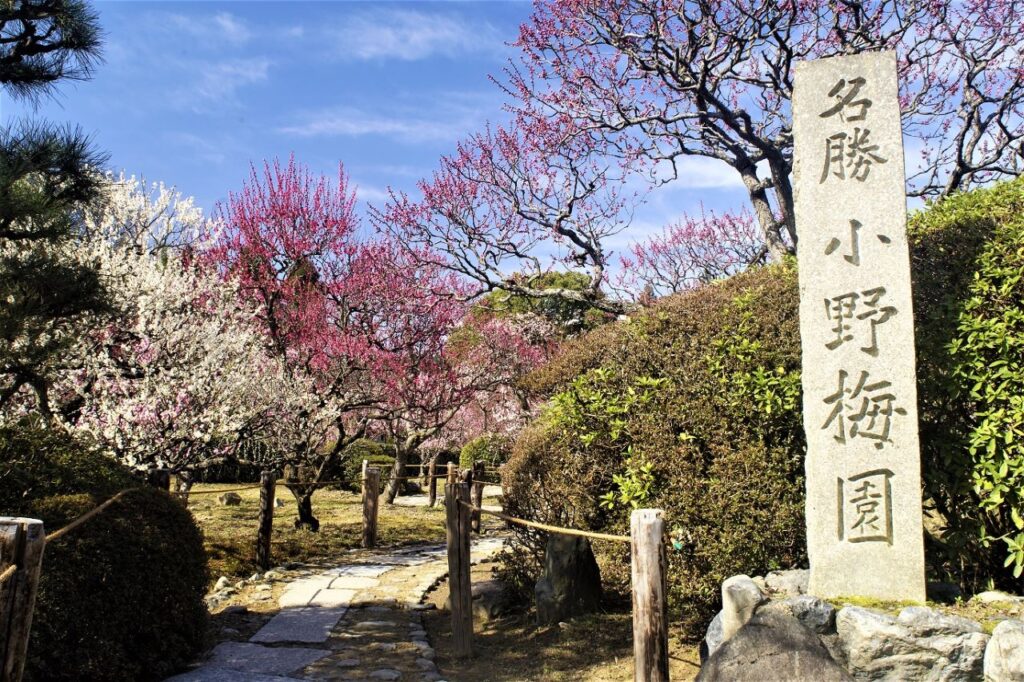

Ono Plum Garden, a scenic beauty spot
Best time to visit: Mid-March
Open: Saturday, March 11, 2023 - Sunday, March 26, 2023
Admission fee/300 yen, free for elementary school students and younger
Admission fee 1000 yen on 26th only.
May be cancelled to prevent the spread of coronavirus
No Gyoicho of the principal image
Event Schedule/Hanaezu Dance March 26 (Sun.) 9:00-16:30
Entrance fee/1,000 yen
(The dance will be held four times: 11:00, 12:30, 13:30, and 15:00.)
Over 600 interviews per year! An order site carefully selected by the editors who knows Kyoto and Shiga.
nowOfficial LINE friend registration500 yen OFF coupon is being issued!
 News
News Feature article
Feature article Featured event
Featured event